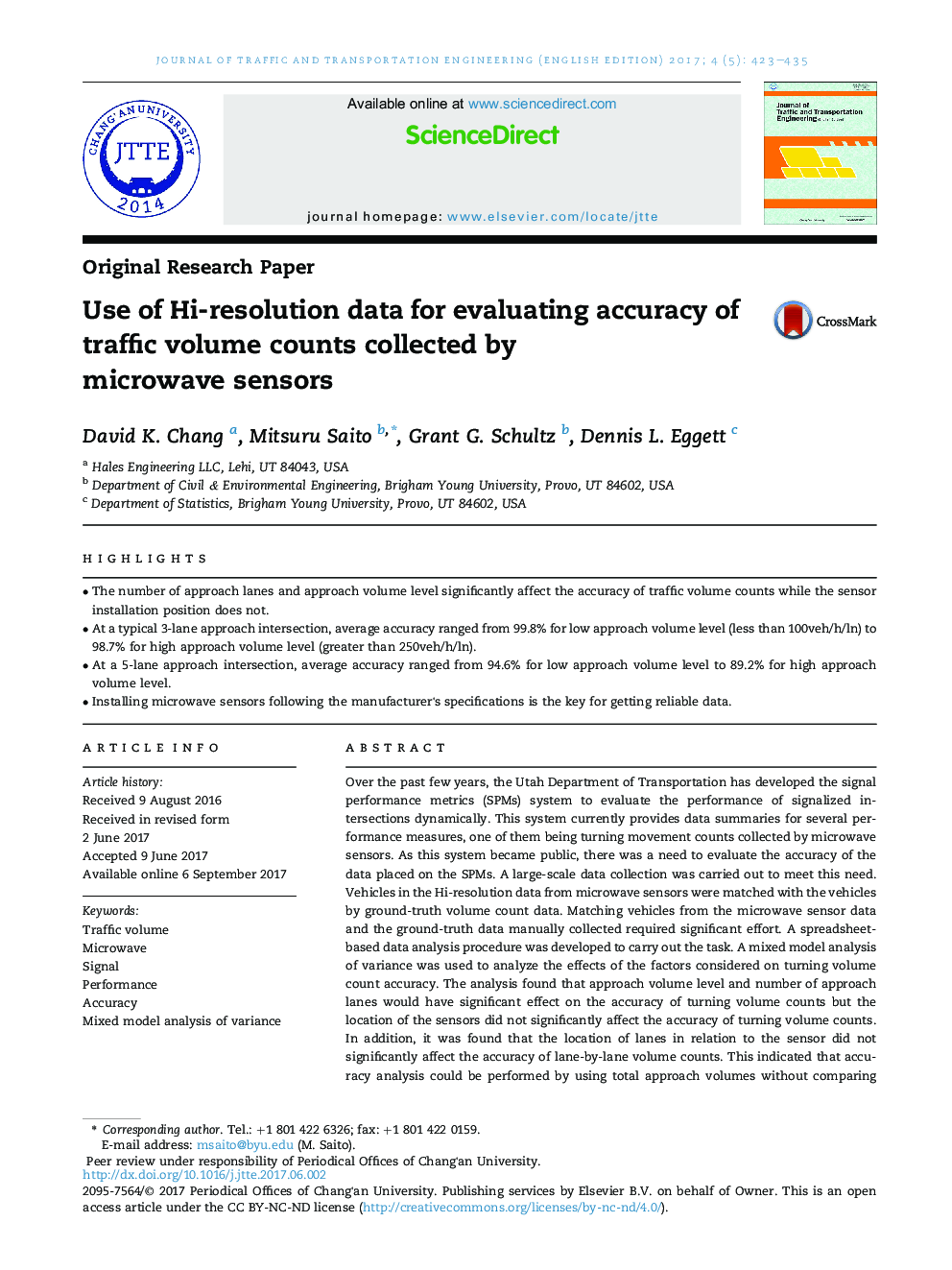| کد مقاله | کد نشریه | سال انتشار | مقاله انگلیسی | نسخه تمام متن |
|---|---|---|---|---|
| 4924631 | 1431030 | 2017 | 13 صفحه PDF | دانلود رایگان |

- The number of approach lanes and approach volume level significantly affect the accuracy of traffic volume counts while the sensor installation position does not.
- At a typical 3-lane approach intersection, average accuracy ranged from 99.8% for low approach volume level (less than 100veh/h/ln) to 98.7% for high approach volume level (greater than 250veh/h/ln).
- At a 5-lane approach intersection, average accuracy ranged from 94.6% for low approach volume level to 89.2% for high approach volume level.
- Installing microwave sensors following the manufacturer's specifications is the key for getting reliable data.
Over the past few years, the Utah Department of Transportation has developed the signal performance metrics (SPMs) system to evaluate the performance of signalized intersections dynamically. This system currently provides data summaries for several performance measures, one of them being turning movement counts collected by microwave sensors. As this system became public, there was a need to evaluate the accuracy of the data placed on the SPMs. A large-scale data collection was carried out to meet this need. Vehicles in the Hi-resolution data from microwave sensors were matched with the vehicles by ground-truth volume count data. Matching vehicles from the microwave sensor data and the ground-truth data manually collected required significant effort. A spreadsheet-based data analysis procedure was developed to carry out the task. A mixed model analysis of variance was used to analyze the effects of the factors considered on turning volume count accuracy. The analysis found that approach volume level and number of approach lanes would have significant effect on the accuracy of turning volume counts but the location of the sensors did not significantly affect the accuracy of turning volume counts. In addition, it was found that the location of lanes in relation to the sensor did not significantly affect the accuracy of lane-by-lane volume counts. This indicated that accuracy analysis could be performed by using total approach volumes without comparing specific turning counts, that is, left-turn, through and right-turn movements. In general, the accuracy of approach volume counts collected by microwave sensors were within the margin of error that traffic engineers could accept. The procedure taken to perform the analysis and a summary of accuracy of volume counts for the factor combinations considered are presented in this paper.
Journal: Journal of Traffic and Transportation Engineering (English Edition) - Volume 4, Issue 5, October 2017, Pages 423-435